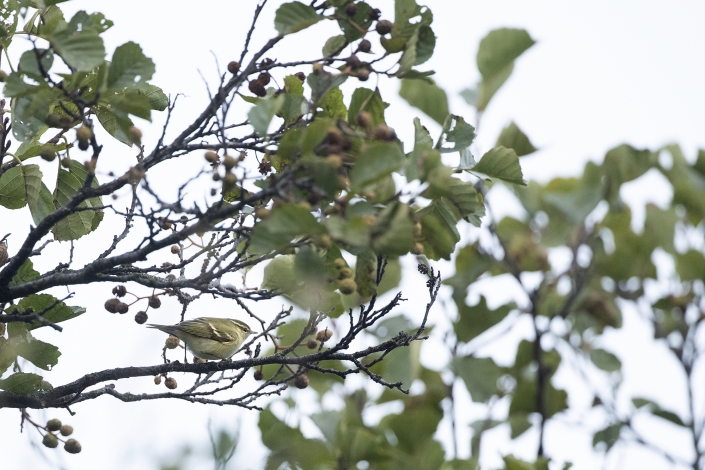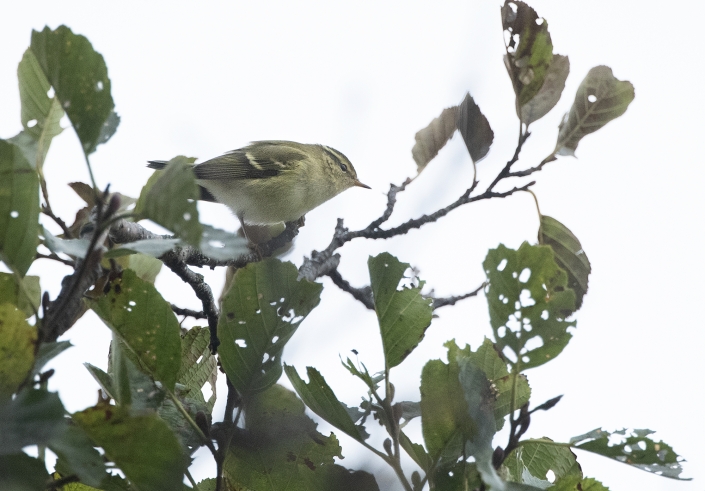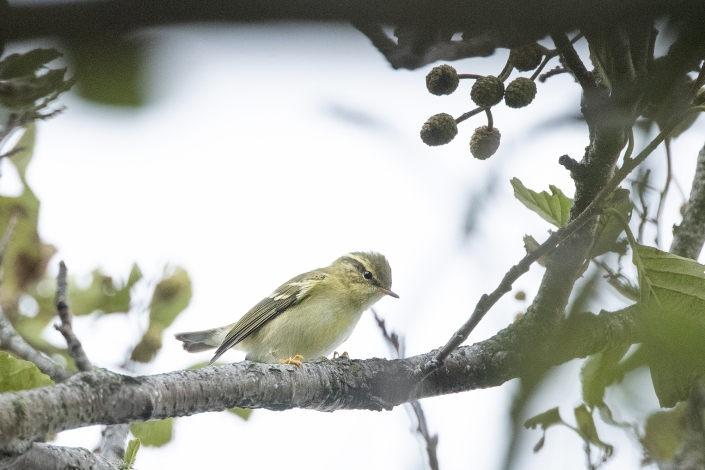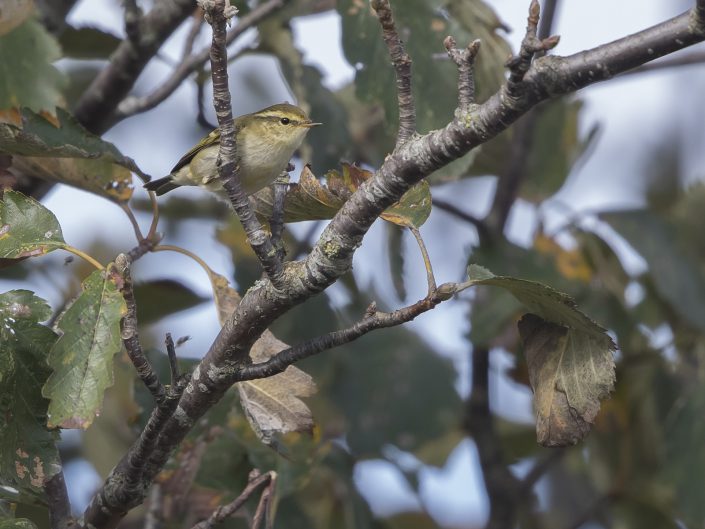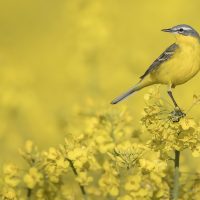This post is also available in: Swedish
Yellow-browed warbler – Phylloscopus inornatus
Yellow-browed warbler – Phylloscopus inornatus
The yellow-browed warbler (Phylloscopus inornatus) is a leaf warbler (family Phylloscopidae) which breeds in temperate Asia. This warbler is strongly migratory and winters mainly in tropical southeast Asia, but also in small numbers in western Europe. Like the rest of Phylloscopidae, it was formerly included in the Old World warbler assemblage.
It was formerly considered to comprise three subspecies, but P. i. humei and P. i. mandellii are now split as a separate species, Hume’s leaf warbler P. humei, leaving P. inornatus monotypic. The two sister species differ slightly but consistently in morphology, bioacoustics, and molecular characters.Before the species was split, the names yellow-browed willow warbler and inornate warbler were used by a few authors.
This is one of the smaller Old World warblers, at 9.5–11 cm long and weighing 4–9 g distinctly smaller than a chiffchaff but slightly larger than Pallas’s leaf warbler. Like many other leaf warblers, it has overall greenish upperparts and white underparts.
It also has prominent double wing bars formed by yellowish-white tips to the wing covert feathers (a long bar on the greater coverts and a short bar on the median coverts), yellow-margined tertial feathers, and long yellow supercilium. Some individuals also have a faint paler green central crown stripe though many do not show this. It is not shy, but its arboreal life style makes it difficult to observe. It is almost constantly in motion. Its song is a high pitched medley of whistles; the call is piercing, often disyllabic “tseeweest”, strikingly loud for the bird’s small size. The only real possibility of confusion is with the similar-looking Hume’s leaf warbler (P. humei), which in the limited area of overlap has duller colours, a faint second wing bar and dark legs and lower mandible. Their songs and calls are clearly distinct, with Hume’s having a more chirping “chwee” call. It can easily be distinguished from Pallas’s warbler as it does not have the a conspicuous yellow central crown stripe and rump patch shown by that species.
The call sounds like thisRecording by Matthias Hemprich from Xeno canto



